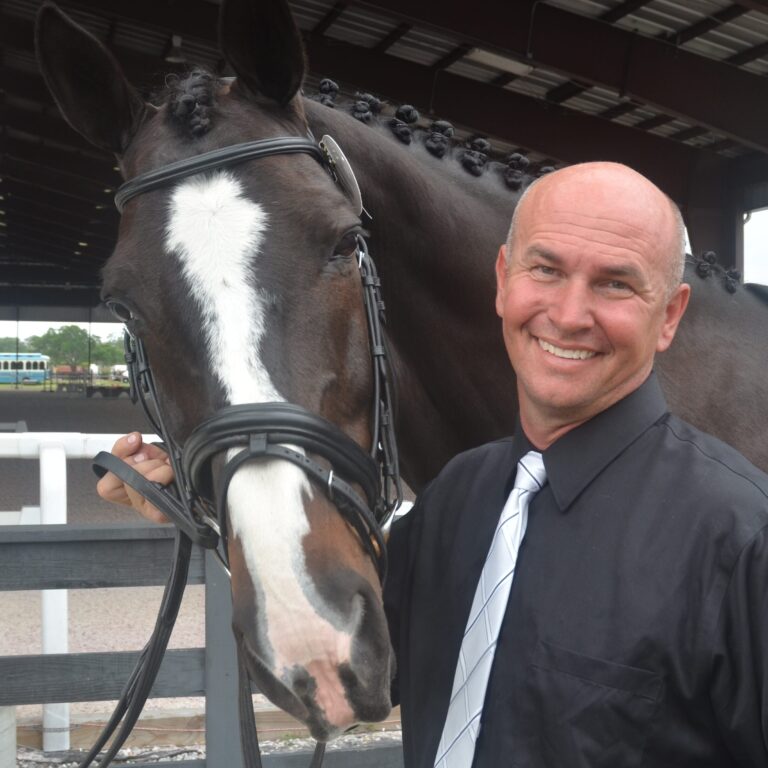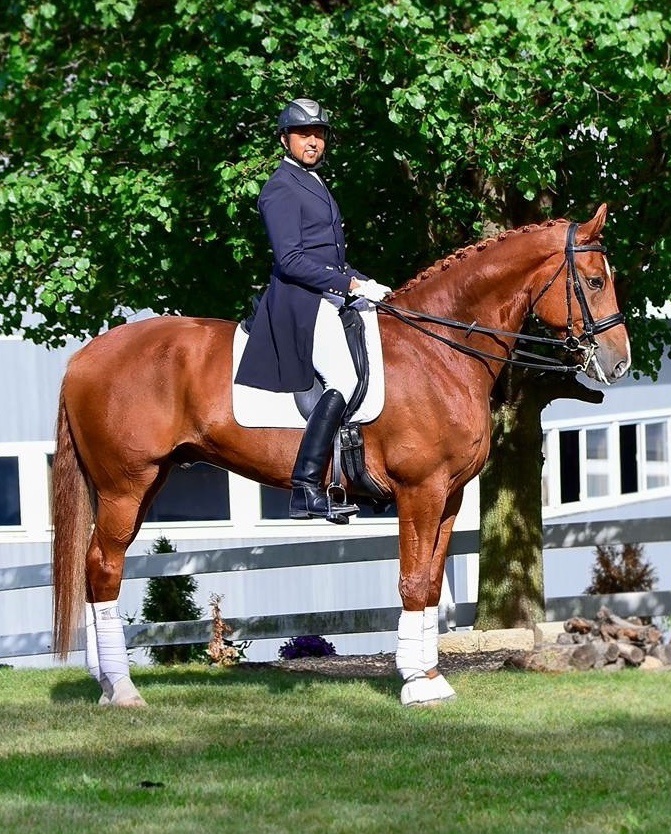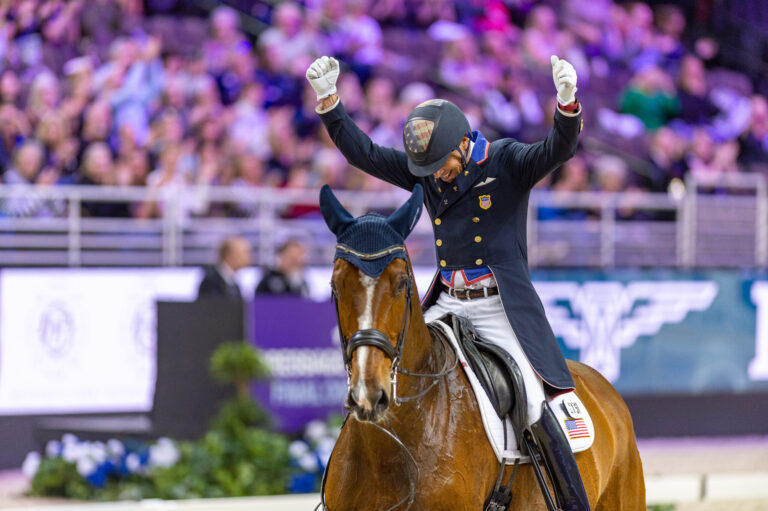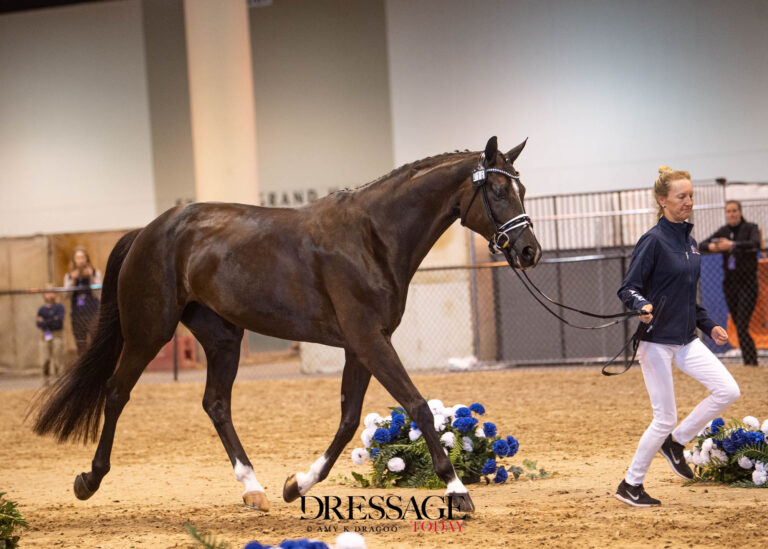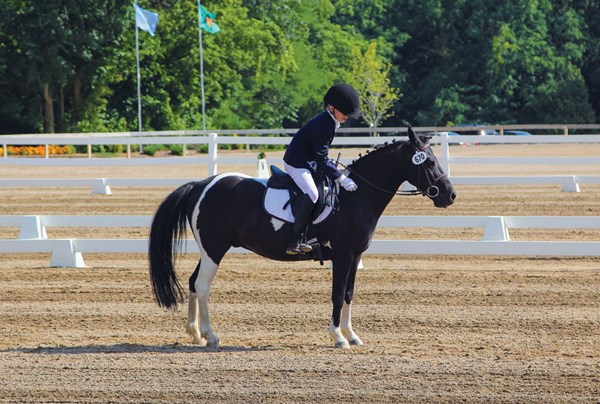
When my daughter, Emma, decided to start riding horses at the age of 5, the last thing she wanted was to ride dressage. The reasons were typical. She thought it was pretty boring. There were too many circles. There were no jumps. Now, four years later, she’s qualified for the regional championships at Training Level. At a time when the dressage community is trying to find ways to entice young riders to compete in the sport, some might find her reasons for switching to dressage familiar. But her reasons for staying with the sport might be both surprising and reassuring.
Like most dressage converts, she switched to riding dressage for the challenge of it. When she first started riding, she was in lead-line classes, where the greatest requirement was being cute and everyone received a blue ribbon. Needless to say—I am her mother, after all—she did a great job at being cute. Later on, when she wanted more of a challenge, she competed in division after division of trot crossrails with a bevy of other girls who wore identical braids and hair ribbons. They trotted over the rails in one direction and then trotted over the rails in the other direction. After two show seasons, Emma decided that she was ready for something more.
The transition to dressage was not easy. She quickly learned that riding all those circles was harder than she had thought, and her pony, who had never been asked to bend before, was sometimes less than willing. But interest in her progress along the way, especially by established people in the sport, encouraged her to keep trying. When George Williams took the time to ask Emma about her pony and shared some of his own stories of riding when he was young, Emma was in awe. When Kate Poulin prepared a special gift bag for her at a clinic and made a point to ask her how her riding was going, Emma was even more determined to succeed. For Emma, having accomplished riders show some interest in her had an enormous influence on her, encouraging her to work hard at a sport that was sometimes difficult and trying.
There were important teachers along the way who made the process of learning dressage both fun and instructive, especially when it might have been only frustrating for a 9-year-old girl and a stiff 12-hand pony.
At her first show, she had high hopes of easily winning ribbons as she had done in the walk–trot division. But the show was a difficult one. Her pony didn’t always do everything that she asked him to do. He whinnied. He tried to run out of the arena. He bent the wrong way. He broke. As she started to walk out of the ring with tears in her eyes, I was ready to comfort her, expecting to hear from her that she wanted to go back to riding walk–trot cross rails.
But just as she walked out of the ring, the applause started, and her face lit up. Much to her surprise and mine, people were clapping for her. They were complete strangers who had watched her struggle with her pony through the test. Several people called out to her, telling her she did a good job. Numerous people came up to her and complimented her on the effort and on her pony. Her tears disappeared, and there was a huge smile on her face. She said to me, “No one ever did that at the other shows!”
The small acts of kindness did not stop there that day. Everyone in the show office knew my daughter’s name the minute we walked through the door. In a special effort to make her feel welcome, the facility operators asked her questions about her pony and riding. The technical delegate for the show even made a trip to our barn to talk to my daughter before her ride, offering to answer any questions she might have. Adult competitors were quick to share stories of their first dressage shows.
One might chalk up the kindness of the dressage community to an isolated event, but it was not. As we traveled from Ohio to Michigan, attending different shows, the experience was always the same. In Michigan, when we attended the dressage shows at Waterloo, all of the staff treated Emma like she was a star even before she hit the show ring. They knew her name by the end of the first day and gave her a special memento to remember the show. There was always someone close by to wish her good luck and to ask about her ride. She was wide-eyed when she told me that they knew her name. We all know how important it is to be recognized for our accomplishments, even small ones. The event organizers of each show managed to do this for Emma over and over again.
As the stakes started to get higher for achieving Emma’s goal of attending regional finals, many of the rides were hard for her. There were the errors for going off course or mistakes in geometry that took away points. After one particularly bad ride, she came out of the ring feeling like she was the only one who had ever received a bad score. But seasoned dressage competitor Roberta Creek Williams was quick to lift Emma’s spirits by telling her that she had officially entered the “49 Percent Club,” which included many other dressage greats. Emma smiled from ear to ear when she understood that all dressage riders—even professionals—have those kinds of days.
I realized then that one of the most valuable assets for drawing young riders and keeping them interested in the sport is the community itself. Dressage is much more than a sport. It is a community of riders who are supportive and kind. This is our best asset for encouraging young riders to continue to ride. Emma attended the Region 1 Championships, but for her, the first year of dressage had already been a great one because of all the people who helped her in ways that they might not have even realized.


